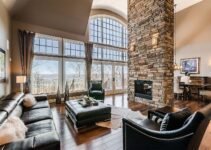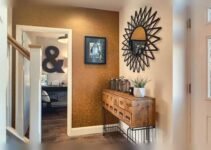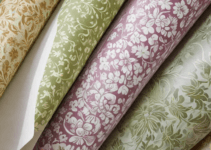Features of wooden skirting boards.
Wooden plinths are no longer commonly utilized in ordinary apartment ceilings. Baths, saunas, and interiors made of natural materials are an exception.
Aside from being ornamental, the application of decor along the perimeter of the walls helps to visibly raise the ceiling and fix minor problems in the plan.
Furthermore, the usage of skirting boards completes and harmonizes the interior design.
Not for nothing were large plaster borders used to embellish the ceilings of historic dwellings. Ceiling plinths composed of polyurethane, PVC, are now available for purchase. Each has its own set of pros and downsides.
Please, read our post and do not forget to check our YouTube channel “Grig Stamate”:
https://www.youtube.com/@GrigStamate
You will find there, thousands of designing, furnishing, and decorating ideas for your home interior and outdoors.
Allow me to mention one of them:
Unpacking the Hype around living rooms with Photo Wallpapers (video)
Watch here a beautiful video from YouTube channel
https://www.youtube.com/@rebeccarobeson1
The advantages of wood finishing materials.
Consider the environment. Natural materials do not emit hazardous compounds and are not allergenic.
A vast range of goods is available, ranging from basic strips to wide carved fillets.
Durability – High-quality skirting boards will last for more than a decade without losing their technical or aesthetic qualities.
Aesthetics – because of the unique wooden design, wooden trim pieces look wonderful and provide comfort.
Versatility – the moldings can be repainted to match the color of the walls or the pattern of the wallpaper, for example.

The disadvantages of wood finishing materials.
Humidity demands… Wood “takes on water,” expands, and can alter shape and split as it dries.
The cost is significantly higher than that of equivalents constructed of synthetic materials.
Rotting and fungal growth – antiseptic treatment of the wood will help address the problem.
Careful installation is necessary; any defects in the base, wrong fit, or poorly treated seams will be obvious.
The mass. Because PVC décor is lightweight, it may be fitted even on suspended ceilings. Wood moldings, particularly those constructed of solid wood such as oak, are hefty. This should be considered before purchasing.
Installation complexity, specifically corner fit.
Because hardwood plinths cannot be bent, semicircular goods are only built to order.
Because wood is a combustible material, it must be treated with fire retardants (compositions that promote fire resistance) while building beautiful baseboards with your own hands.
Special impregnations, varnish, or wax are utilized to protect against moisture and enhance the service life.
The use of waxes can produce the appearance of shiny and velvety surfaces.
Types of wooden skirting boards.
Wooden skirting boards are classified into numerous types, each of which is chosen based on the style and function of the room. Narrow borders, for example, are appropriate for an ordinary flat with low ceilings and wide cornices for a private residence. Borders – narrow stripes with a simple decoration in the form of a curly edge, up to 50 mm wide; cornices – massive and wide, often decorated with carvings, used in the decoration of premises with high ceilings; fillets – suitable for decorating rooms in a classic style, distinguished by a sophisticated design.
The most prevalent are chopsticks, which come in a range of forms and sizes.
Important: wooden plinths should not be attached to false ceilings. Wooden fillets are quite heavy, so it is better to choose PVC products.
How to choose the right wooden skirtboards?
The primary deciding factors are wood quality, cost, and resistance to high humidity conditions (if you choose skirting boards for the kitchen, bathroom, or bath). Conifers are commonly utilized in the production of ceiling decor:
Spruce – resistant to dampness but excessively hard.
Larch is not scared of wetness and is practically impervious to rotting, although it is significantly more expensive than other conifers.
Pine is a low-cost material with high technical properties that is simple to implement.
Due to the high cost of the material, oak is defined by a unique high-strength timber pattern; finishing parts are created primarily to order.
Conifers are inexpensive, and because of their light wood, they are perfect for staining and varnishing… Among the flaws is the existence of resin passageways (particularly pine), which affects moisture resistance.
Stores also sell low-cost fir skirting boards wrapped in excellent wood veneer.
They are more expensive, but based on the interior solution, you can select between “oak” and “walnut” décor.
When selecting, consider the wood’s quality – it must be dry. If there are any knots or imperfections on the surface, you will have to spend time processing them. It is preferable to use factory products because they are stronger and are impregnated with specific compounds that enhance the life of wood.
Other related posts from our website:
https://howtobuildahouseblog.com/colonial-baseboard-installation-tips/
https://howtobuildahouseblog.com/how-to-paint-baseboards-close-to-the-carpet/
Thank you so much for your attention.
Stay tuned. We will upload many other amazing posts to our website and videos onto our YouTube channel.
Thank you so much.
for your time and attention.
Best Regards
See you to another post,
Bye, Bye


